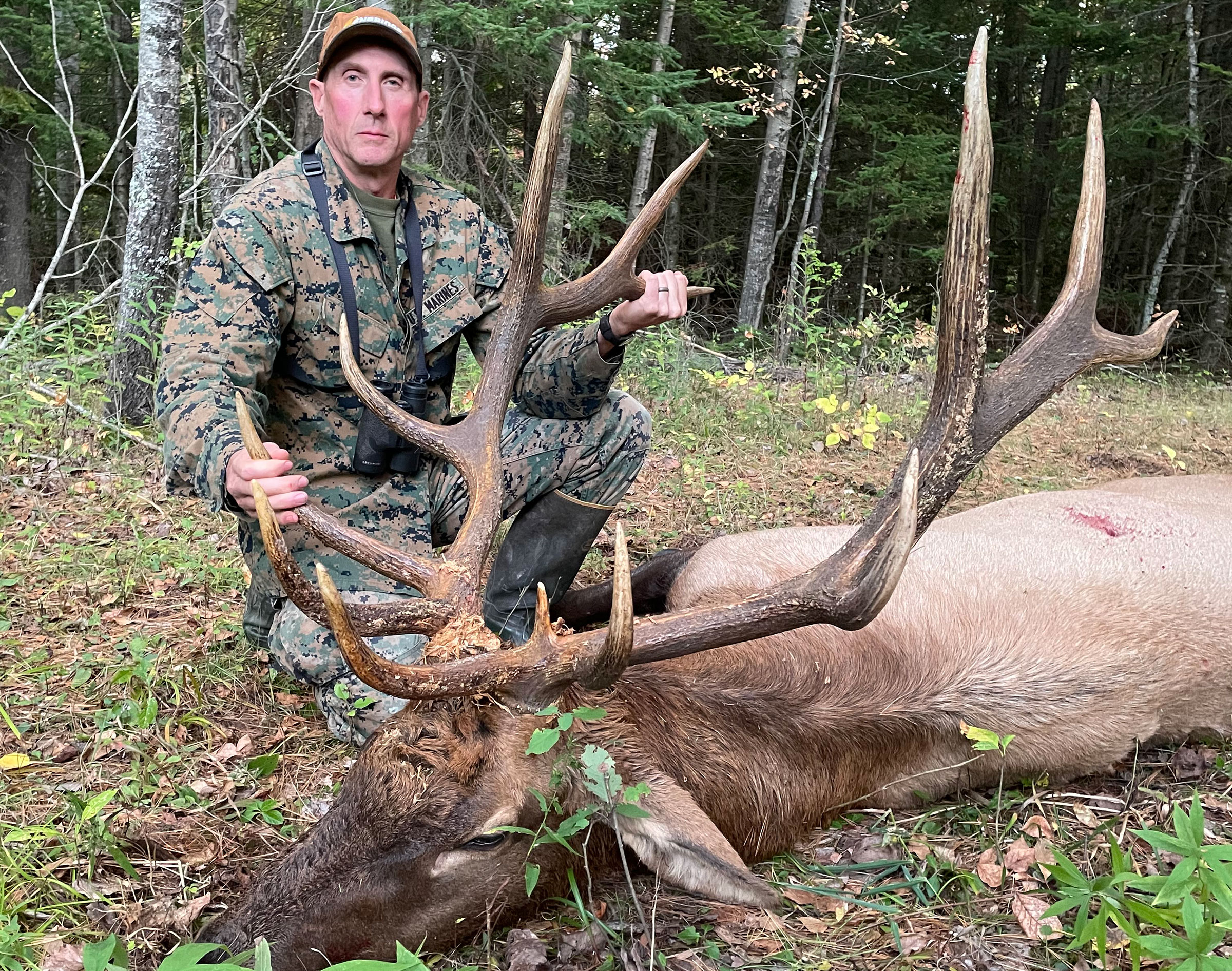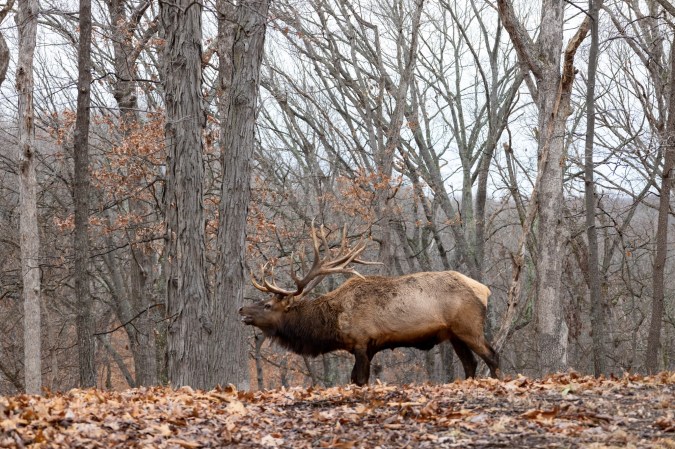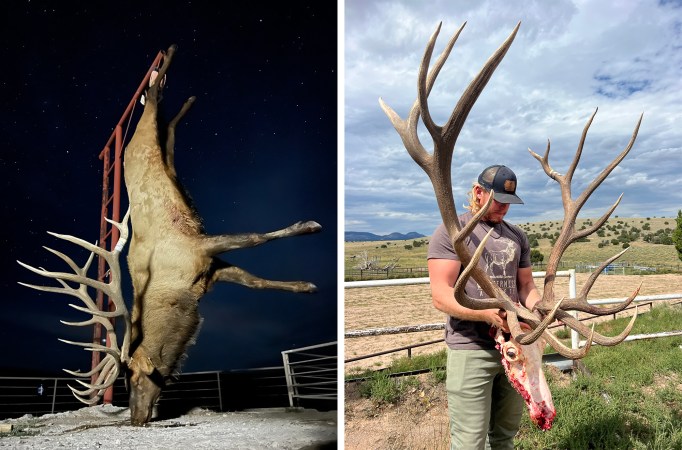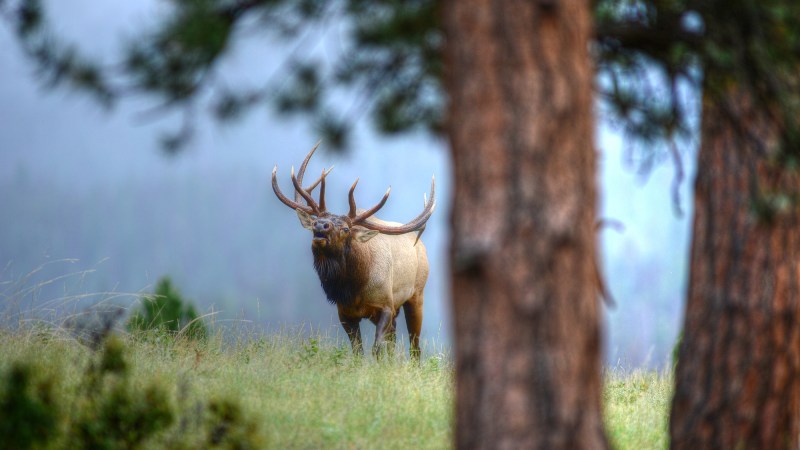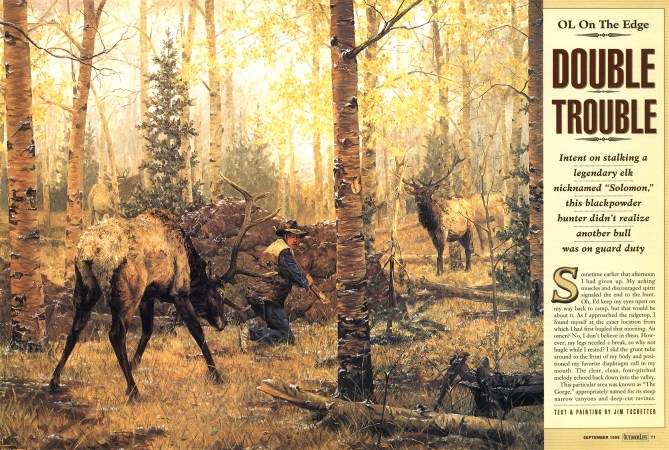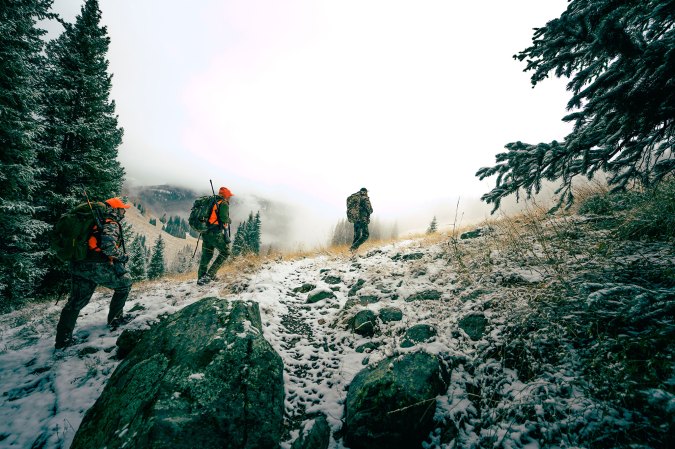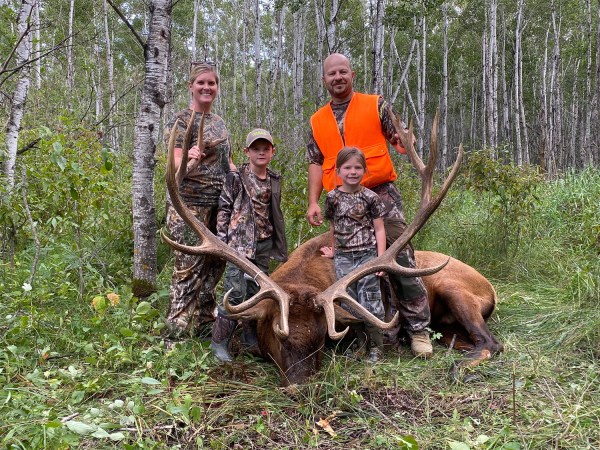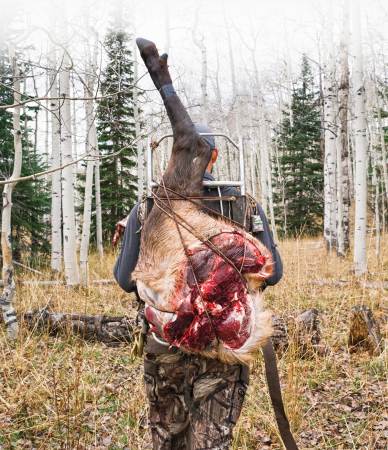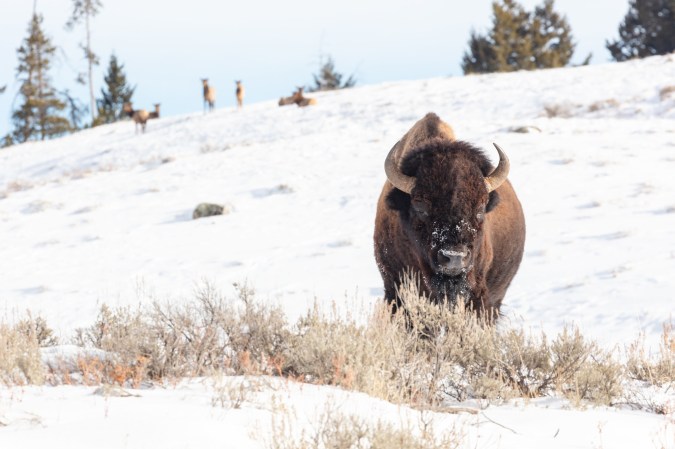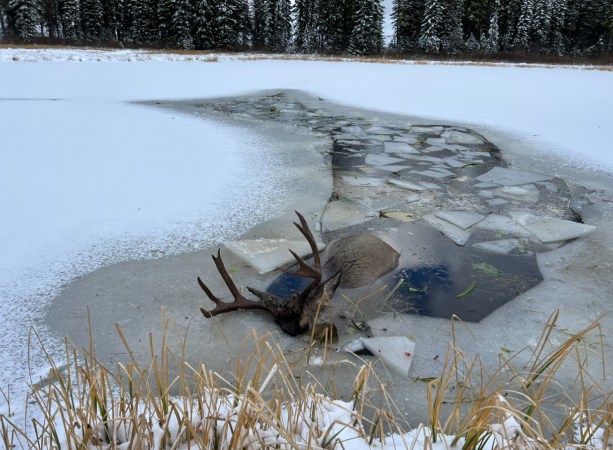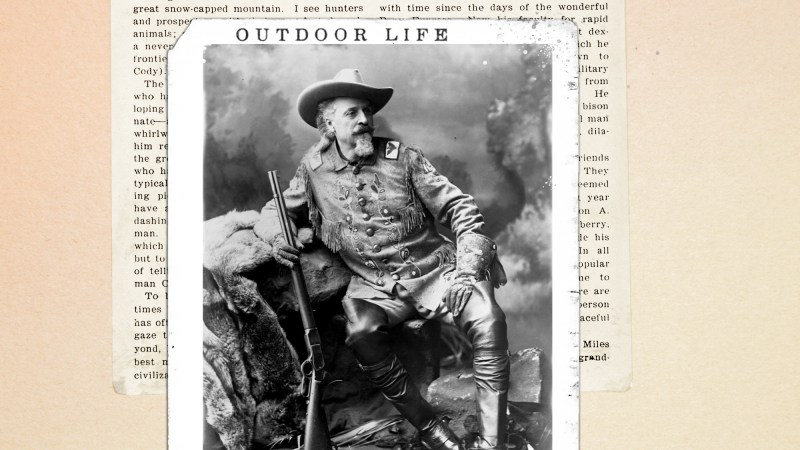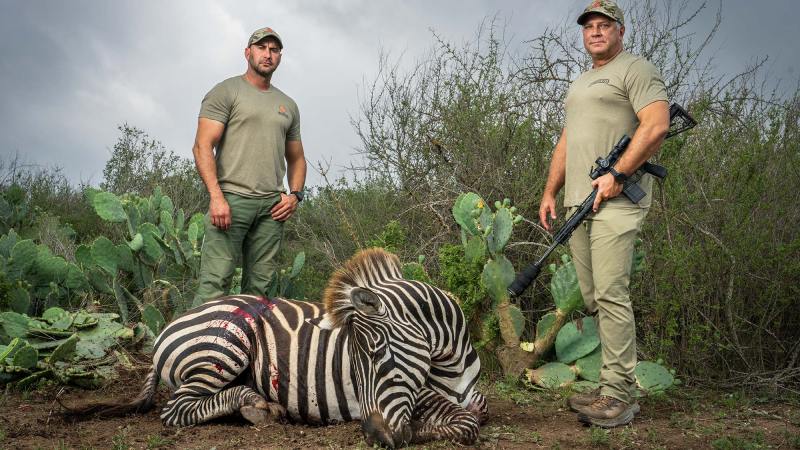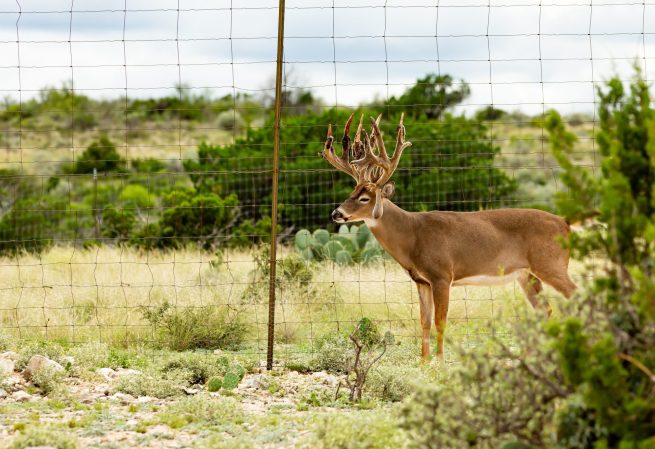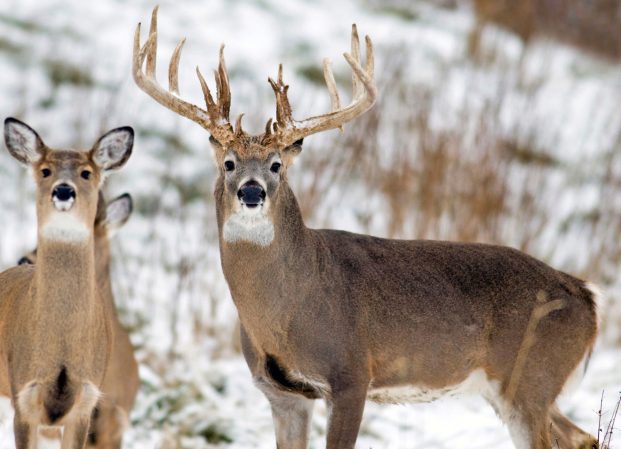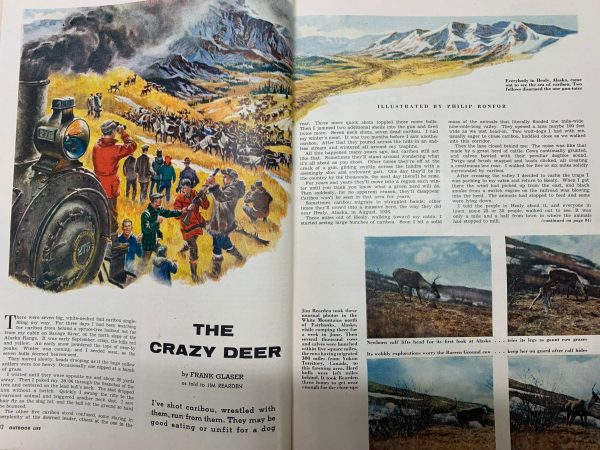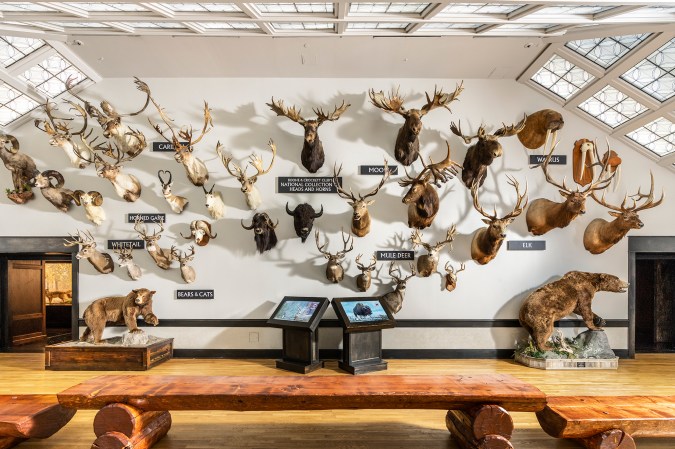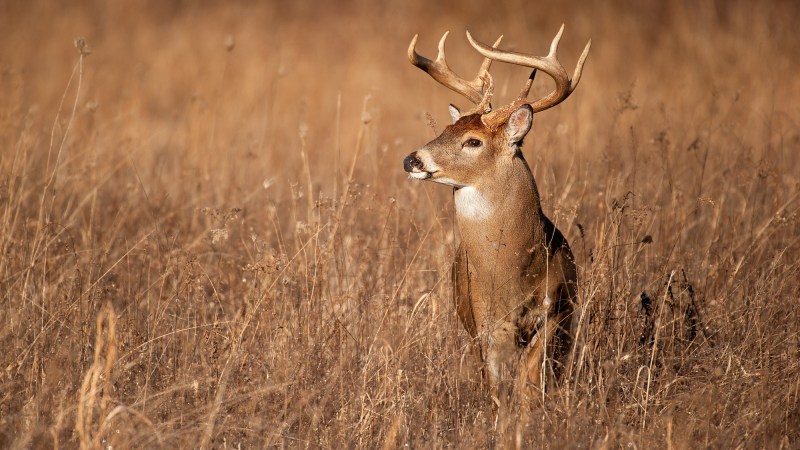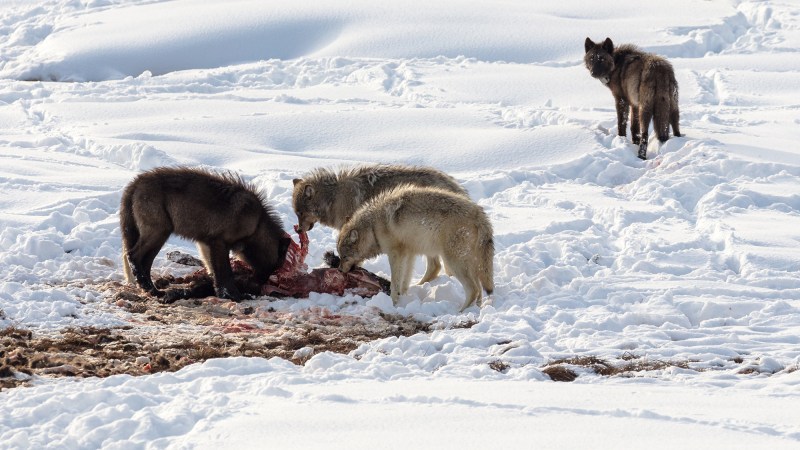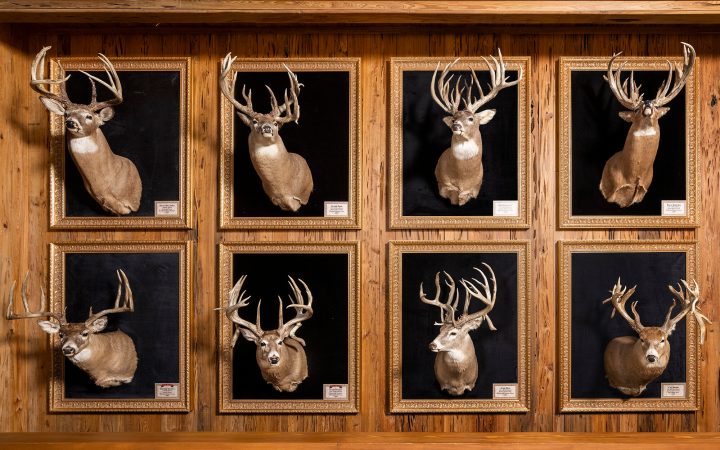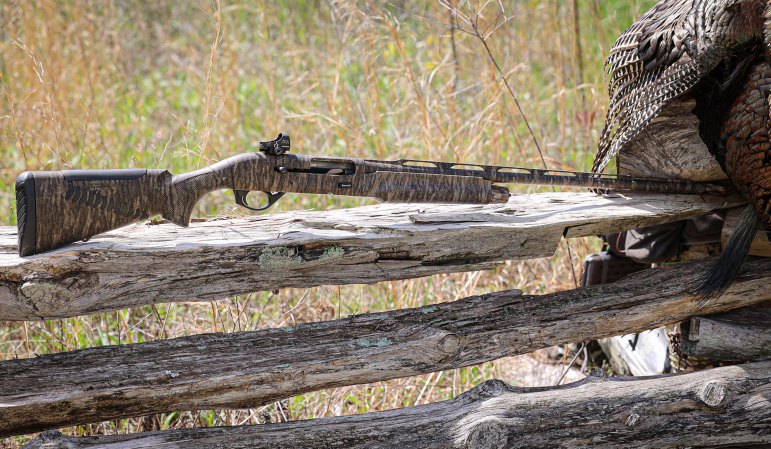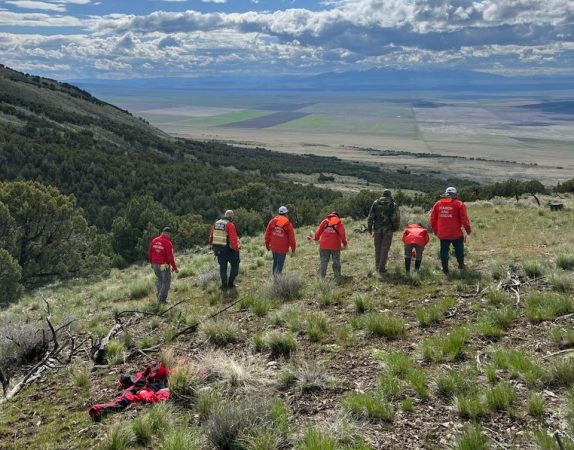When retired infantry Marine Lieutenant Colonel Mark Mackey slipped into his Bayfield County, Wisconsin tree stand one evening in early October a few years ago, he wasn’t after deer. He was targeting a huge bull elk that had been using his food plot periodically.
When the bull came by following a cow elk that was wearing a blaze orange collar, he settled the rifle’s crosshairs behind the bull’s shoulder and stroked the trigger. No, Mackey hadn’t drawn one of only three highly coveted elk tags offered by the Wisconsin Department of Natural Resources that year. Instead, at the request of a state biologist, his job was to remove the bull elk, which had escaped from a nearby game farm.
The Man for the Job
The DNRs was confident in Mackey’s abilities. He had a 23-year military career, including a half dozen deployments overseas. And after his time in the military he lived off the grid on the Yukon River in Alaska.
“I had six tours of duty, including Somalia, Desert Storm, Iraq, and Afghanistan’s Enduring Freedom,” says Mackey, who along with other recognitions, was awarded the Bronze Star for his service in Iraq.
After his separation from the Marines in 2014, he needed a break. He decided to head north away and fish his way through the Yukon Territory.
“The better the fishing was, the slower I went,” says Mackey. “I was primarily fly fishing, it’s incredible country.”
After completing his slow journey north, Mackey eventually moved into a little cabin, which had a wood burning stove but no running water. He hunted and fished for his food, subsisting on grouse, ptarmigan, and fish.
“I think every young man dreams of living in the wilds of Alaska someday, and that was part of my adventure. I also needed some soul searching and mental healing after my military career. A double dose of healing. I felt I was ready to get back to the real world after a little over a year up there and came back to Wisconsin and family.”
The Lost Bull
The bull elk that Mackey was after came from a high-fenced shooting preserve, and was believed to have been on the loose for about 18 months, along with three other elk. The DNR biologists were hoping the absentee owner of the elk would be able to arrange their capture, but that didn’t happen. The DNR has the authority to shoot escaped domestic deer and elk, but it’s not their first choice since escapees are considered private property. Because each escapee scenario is different, they’re carefully reviewed before a decision to remove the animal is made.
While some might think a few adult bulls joining Wisconsin’s relatively new, slowly expanding population elk herd would be a good thing, biologists and local officials thought differently. If interbreeding took place, the offspring would have the genes of a domestic elk, which are different from those of the wild elk that had been introduced.
“The goal here is to get these mature bulls off the landscape so they don’t interbreed,” WDNR wildlife health section chief Tami Ryan said at the time. The other concern was that the escaped elk would spread disease, primarily Chronic Wasting Disease, which has often been found in domestic deer and elk farms in Wisconsin.
Today, the total elk population of Wisconsin sits at 400 individuals, although the WDNR expects that number to grow to around 550 following this year’s calving season, according to a recent Outdoor Life story. There are two reintroduced herds in the state, one in the north (where Mackey lives) and one in the west-central area of the state. As the west-central herd has grown, state officials plan to open a hunting season there like the one currently offered in the north. Every year since 2018m up to 39,000 resident hunters have entered the draw for just eight to 10 northern elk tags.
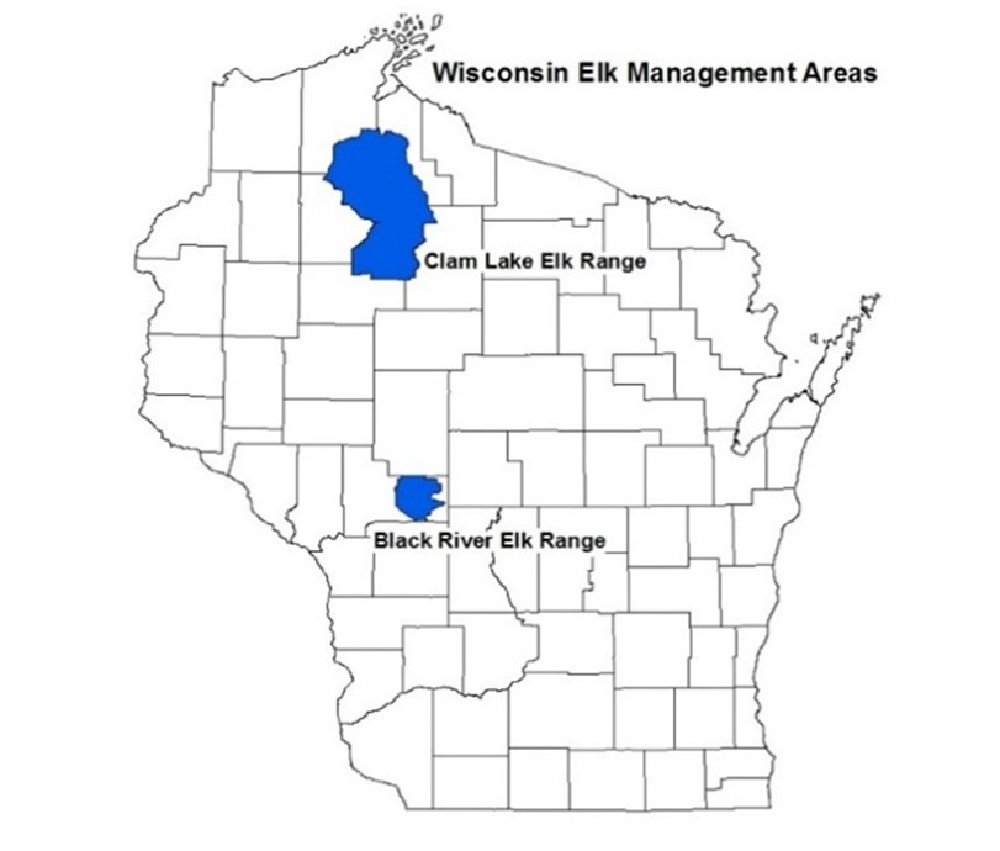
The elk Mackey was after had escaped from a 900-acre hunting preserve surrounded by six miles of fence. Flooding at river crossings had created breaches in the fence and allowed the elk to escape the facility. Initially the absentee owner of the shooting preserve was reluctant to claim ownership of the elk, but eventually did and authorized the removal when attempts to capture them failed.
State law allows the DNR to “seize or dispose” of any escaped deer or elk if they’ve traveled more than three miles or have not been returned within 24 hours of their escape. Still, this is not the preferred option for biologists. Efforts are always made to convince the animal’s owner to capture the animals and get them back into a secure, fenced area. After biologists observed the elk’s distinctive rack, they knew this was the escaped bull, not a wild one. This is when Mackey got the green light.
Culling a Trophy Bull
“I support the DNR and their efforts to establish a viable, healthy elk herd in northern Wisconsin,” says Mackey. “I knew the bull was in the area, using my food plot periodically. I was also told there had been sightings of a few wild cow elk that had begun moving north to our area from the core of the herd’s location further south. Goose hunters had reported seeing the bull near my food plot too, so I knew they were close,” Mackey says. “The biologist gave me the authorization to shoot him.”
Mackey makes it clear he did not consider this a hunt. Instead, he thought of it as a culling. So when he saw a cow elk with an orange collar being followed by the huge bull, he did what he had to.
“I knew it was a good hit,” he says of the shot. “I called the biologist and told him what I’d done. The bull didn’t go far.”
Mackey’s primary concern was recovering the meat from the big bull to make sure it was utilized.
“I’m not into scoring or measuring horns,” says Mackey, “but friends who are said he would have been in the 330 to 350 class. We estimated the dressed weight to be between 550 and 600 pounds. The bull’s owner was concerned the meat [would] go to waste, so it was given to needy families in the area after being tested for CWD.”
Mackey was glad to hear some meat went to a military family in the area. “Some of them need help after getting out of the service,” he says.
In Wisconsin, the Department of Agriculture Trade and Consumer Protection is charged with oversight of the domestic deer and elk industry, while the DNR has oversight of fencing requirements. The owner of the escaped bulls was issued several citations for violations related to reporting the breaches in their fences and their delayed repair.
Officials say that this was a very restricted and controlled situation where the landowner worked with the DNR to have the animals eliminated. Neither hunters nor landowners should ever make assumptions about elk being a domestic escapee.
